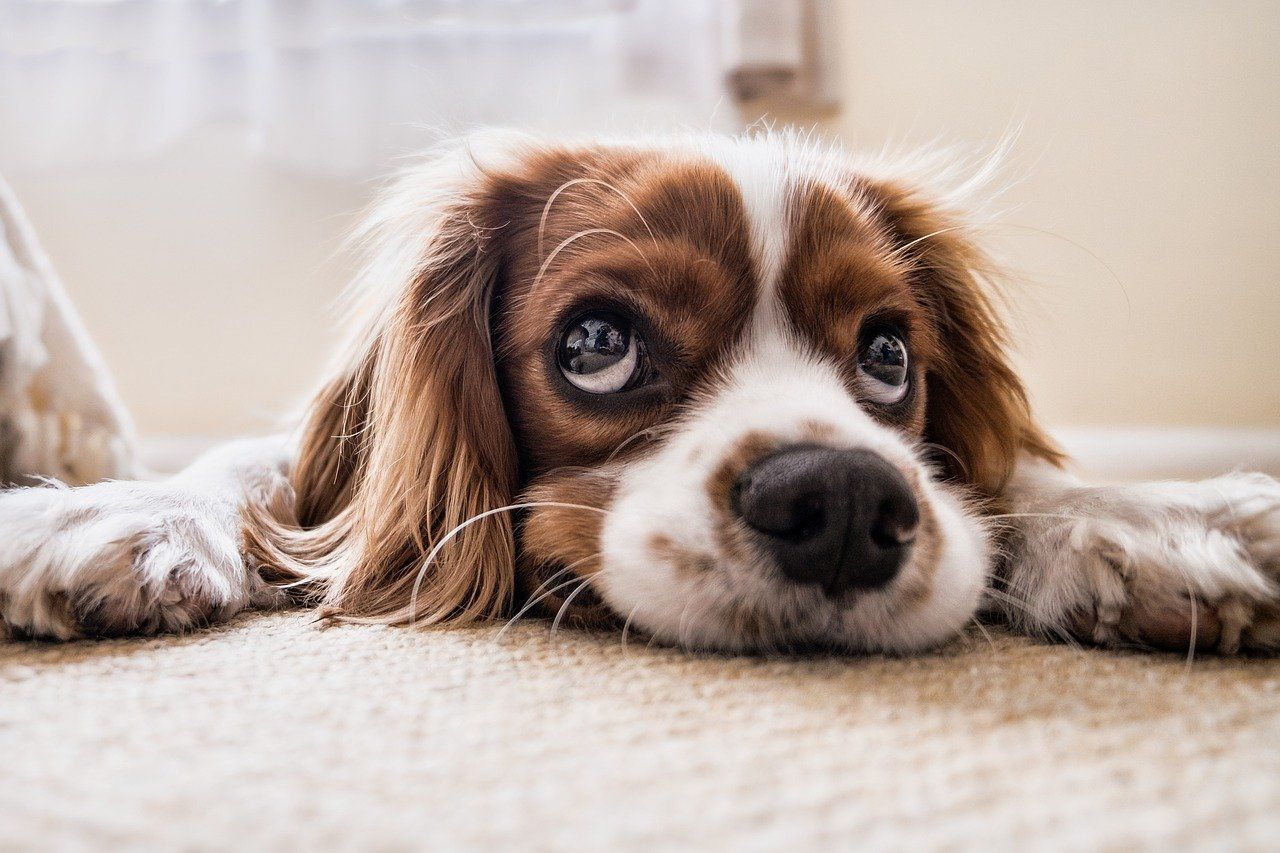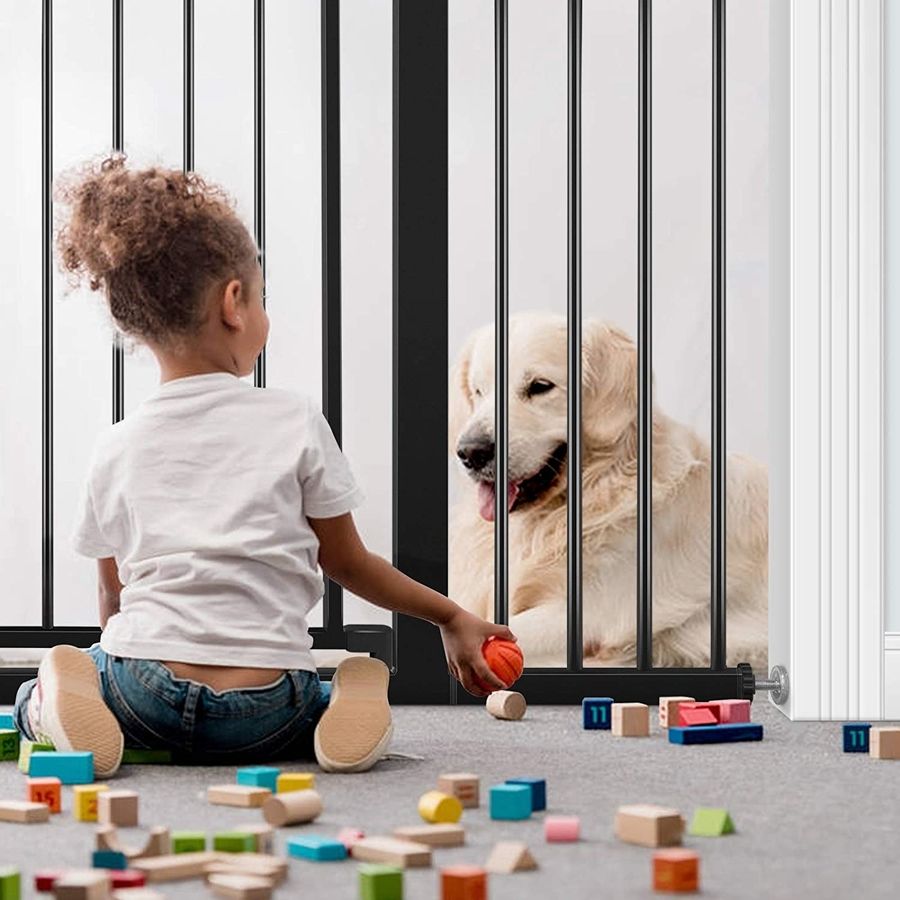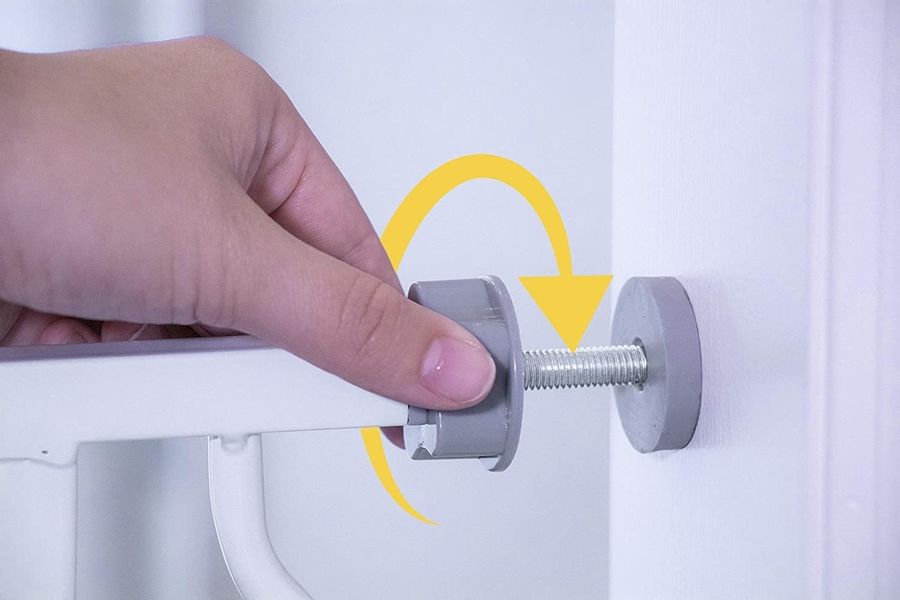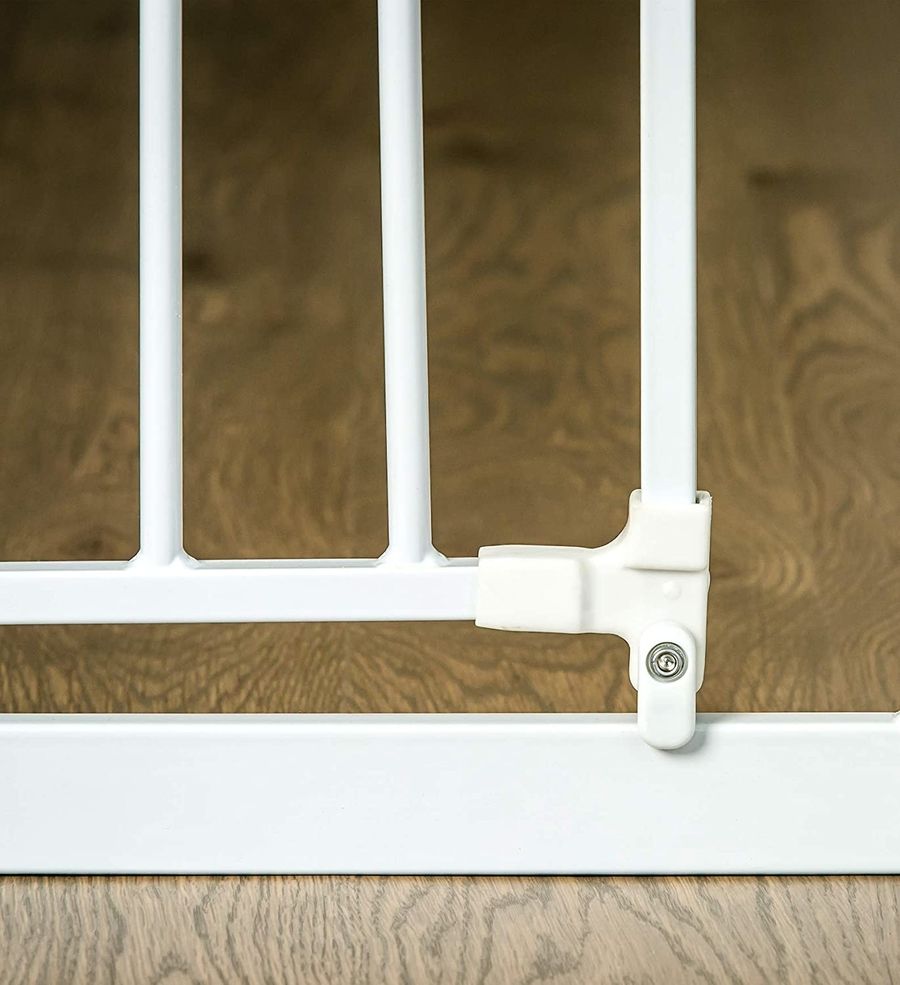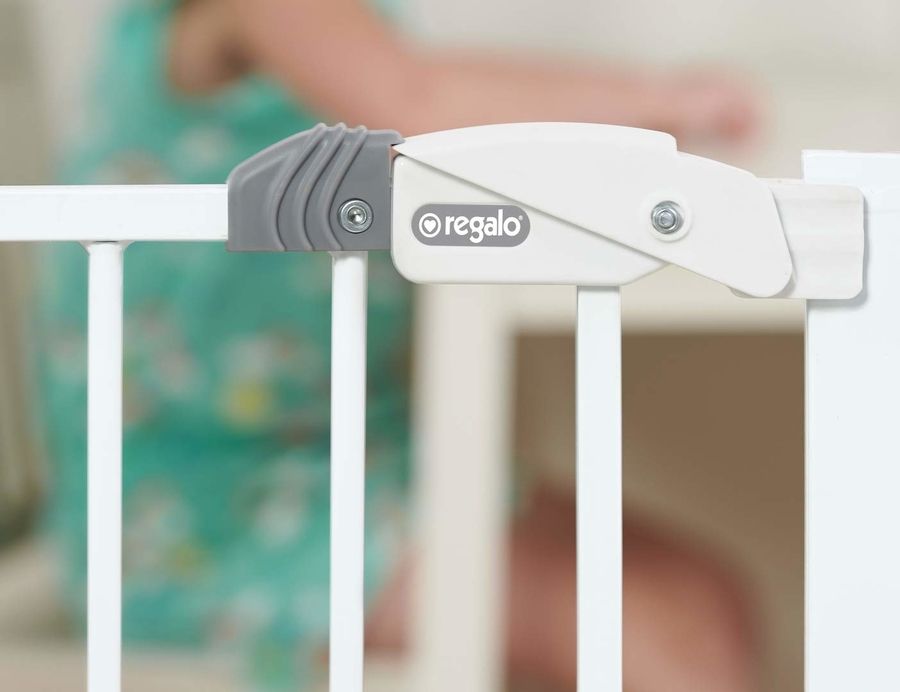Baby gates and puppy gates are sometimes viewed as one and the same, although they are far from the same. While they may indeed be constructed of the same sorts of materials and have similar designs, they are most definitely not universal. In this article, we'll explore the differences between baby gates and puppy gates in general, as well as discuss what to look for in the best gate for your dog.
Generally speaking, baby gates tend to consist of the same types of metal, plastic, and other materials found in dog and puppy gates. The main difference between the two is in the overall strength of their designs. In baby gates, for example, materials tend to be much lighter in weight than what is found in puppy gates. Likewise, most baby gates are not resistant to the chewing, clawing, and jumping that's almost guaranteed to come from a puppy.
Difference Between Baby and Dog Gates
The differences between baby gates and dog gates don't always jump out at you at first glance. Generally speaking, baby gates tend to consist of the same types of metal, plastic, and other materials found in dog and puppy gates. The main difference between the two is in the overall strength of their designs.
In baby gates, for example, materials tend to be much lighter in weight than what's found in puppy gates. Likewise, most baby gates are not resistant to the chewing, clawing, and jumping that's almost guaranteed to come from a puppy or dog.
Let's have a closer look at some of the main features of each one, below:
Baby Gate Features:
- Lightweight plastic and metal materials.
- Heights of 22 to 39 inches.
- 22 to 62-inch width.
- Bar spaces of less than 3 inches.
- Smooth edges.
- Smart latches.
- 25 to 30-pound weight resistance.
- Some gates have child alarms.
Dog Gate Features:
- Heavier-duty plastic, metal, and wooden materials.
- Heights of 18 to 72 inches.
- 22 to 72-inch width.
- Pet-proof locks.
- 40-pound resistance or greater.
- Some gates are electronic with remote controls.
- Some include cat doors.
What to Look for in Dog Gates
Now that we've talked about baby gates, and the differences between them and dog gates, it's time to learn exactly what to look for in the right dog gate for you.
Mounting
Dog gates are typically either pressure-mounted and hardware-mounted. Pressure-mounted gates generally need to be set in the doorway, and a lever or bar is adjusted until the gate is locked in place. With hardware-mounted gates, it'll be fixed to the doorway via screws, bolts, hinges, or some sort of mounting brackets. Depending on whether you want to use your gate in more than one doorway, or if you want it permanently installed in one place, it should be no problem picking which mounting type suits your needs.
Height
The best minimum and maximum height of your new gate should be suitable for your dog's breed and behavior. If the recommended height for your breed is 36 inches, for example, but your dog is a jumper or a climber, you may want to consider buying something that is a few inches higher. On the other hand, if you are buying a gate for puppies that won't be growing very tall, you could get away with a much shorter gate.
Weight
Your puppy or dog's weight goes a long way in determining the best gate for you and your pet. Generally speaking, if you're buying a gate for a full-size dog, you won't want to even consider anything that has a maximum weight of less than 40 pounds. Likewise, if the gate is for puppies of a smaller breed, you could get away with a 25-pound weight limit or less.
Bars/spacing
If you're worried about your pet climbing up and over your gate, which you probably should be especially if it is a new dog that you haven't gotten to know yet, look for one that comes with vertical bars at the bottom. That way your pet won't be able to get a foothold on the gate, let alone get over it.
Locks
Another important feature to keep in mind when looking for the best dog gate for you and your pet is the gate's locks. Some gates have no real locks to speak of, rather they are "locked" in place by pressure or mounting hardware. That said, other gates come with built-in locks that click or snap into place and won't come undone unless you properly unlock them. If you have a larger dog or one that jumps a lot, you may want to consider one with additional safety locks.
Cost and Warranty
The price of a dog gate doesn't always indicate its true quality. You need to look over all of the gate's features and the overall quality of its materials and design before attempting to gauge whether it is a fair price or not. Also, keep in mind that gates with warranties or some sort of money-back guarantee are generally higher quality than gates without any extra protection.
Using a Baby Gate for a Puppy
If you plan to use a baby gate for a puppy, or the other way around even, you need to do your homework before doing so. Based on all of the information laid out for you above, you should have no problem spotting the most important features that you need your gate to have.
Using a baby gate for a puppy is not such a great idea, with run-of-the-mill gates. But if you make sure that the gate is strong enough to withstand the force of your jumping puppy's weight, as well as survive its chewing and pawing, there's no harm in it. Use your best judgment and you should be fine.
Aside from the maximum weight that the gate can hold, as well as how resistant it is to damage, you also need to keep in mind the other factors we talked about such as height, width, and safety latches. Also, be sure to take your puppy's personality and breed into consideration.
A Final Word
So can you use a baby gate for your dog or puppy? Th short answer to this question is a resounding "no". However, exceptionally well-made baby gates can indeed double as a reliable dog gate for a puppy or even a full-grown dog. But for the most part, you should always assume that a baby gate is not capable of protecting your pet, and vice-versa. Looking for a solution for the backyard? Check out our dog fence ideas.

